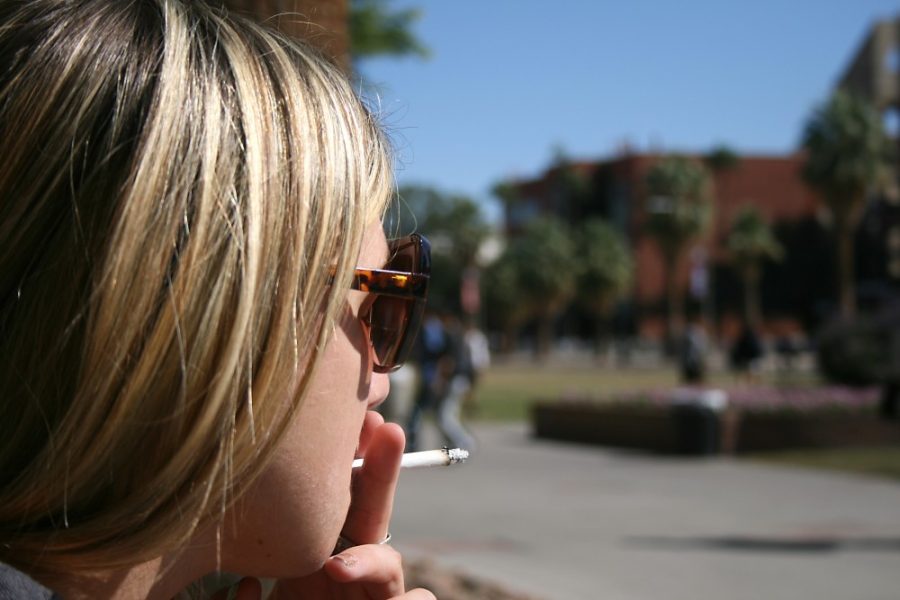One student is working to snuff out tobacco use on campus.
In an effort to protect people from secondhand smoke, Emile Gordon, a senior studying microbiology, molecular and cellular biology and human physiology, began an initiative to make the UA smoke-free about one year ago. On Jan. 1, the entire Arizona Health Sciences Center campus will prohibit smoking. Gordon said he hopes the entire UA campus will follow suit within one year.
Gordon said his proposal is meant to promote the overall health of the entire UA community, for smokers and non-smokers alike. Secondhand smoke is dangerous, too, Gordon said, and people should not have to be surrounded by smoke without their consent.
“We need to tell people that we are not OK with the current status quo,” he said. “The reason that we are doing this is to change the norm.”
At the moment, the UA’s smoking policy prohibits smoking within 25 feet of building entrances, exits or fresh air intake vents. One of the only exceptions is outdoor stairwells designated for smoking. If the UA’s next president accepts Gordon’s proposal, all smoking spaces on campus will be eliminated.
Sitting outside Centennial Hall with a fuming cigarette in hand, Ed Nassy, an anthropology sophomore, disagreed immediately when he heard about Gordon’s initiative.
“We should have the right to smoke in public,” he said. Although Nassy said he understands current restrictions on smoking on campus, he said eliminating all smoking spaces would infringe upon his rights.
If Gordon’s proposal succeeds, there may be controversy among non-smokers, as well. Brianne Noriega, a senior studying optical engineering, said smoking areas should exist because smoking is more than a bad habit, it is an addiction that some, unfortunately, need to satisfy.
However, pharmacy freshman Toni Watson said making campus smoke-free is a good idea because schools should be “environmentally healthy.”
“A person should be able to walk around school feeling like they are not going to get the secondhand smoke,” she said.
According to Lynn Reyes, a preventative specialist at Campus Health Service, smoking rates among students have been declining. In an annual survey by Campus Health, UA students were asked if they had used tobacco within 30 days of taking the survey. Of the 2,487 students surveyed this year, 22.1 percent responded they had, compared to 30.8 percent in 2002.
“I think that’s a national trend,” Reyes said, referring to the declining number of student smokers. “It’s a cultural shift that we’ve seen.”
UA statistics line up with national data. According to a survey conducted by the Centers for Disease Control and Prevention in 2009, 21.8 percent of adults ages 18 to 24 reported smoking every day. Additionally, only 11.1 percent of people with undergraduate degrees and 5.6 percent of people with graduate degrees identified as smokers.
Although experts cannot point to a single cause, the diminishing popularity of smoking is probably due to smoking prevention media and campaigns, Reyes said. The recent spike in the tobacco tax, coupled with health risk data, may have contributed as well.
“I guess you could say that it’s becoming uncool to smoke,” Gordon said.
According to Gordon, more than 300 universities have become smoke-free campuses. If the UA is to be a leading institution in promoting health, it is only appropriate that it do the same, he said.
Soon the UA’s Student Health Advocacy Committee will distribute a petition among students to prohibit smoking on campus. Gordon said the process is meant to be a “positive experience” for students, especially because it is meant to improve the general health of the student body.
“We’re not coming down with a Draconian fist and saying this must happen,” he said.









